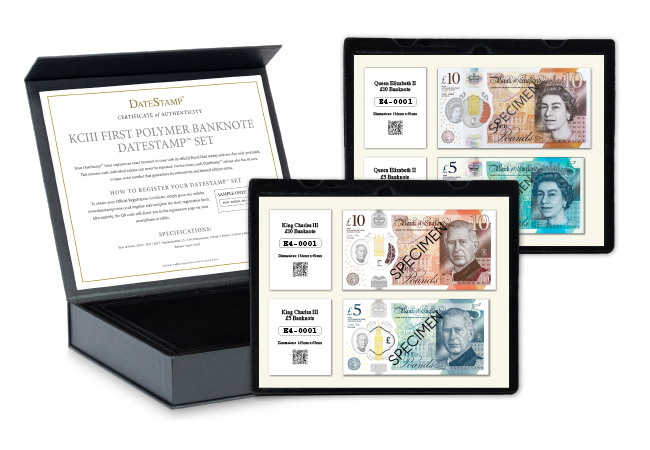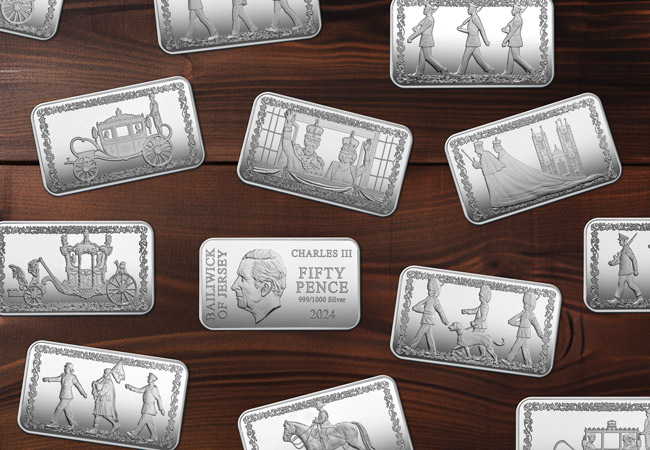Posts Tagged ‘king charles III’
The Evolution of UK Banknotes: From Paper to Precision
The history of banknotes in the United Kingdom is a fascinating journey of innovation, security, and tradition. From the earliest issues to the forthcoming King Charles III banknotes, each phase reflects the technological and cultural shifts of its time.
A Brief History of UK Banknotes
The Bank of England began issuing banknotes shortly after its establishment in 1694. Initially, these notes were handwritten, a far cry from the highly sophisticated currency we use today. By the mid-18th century, partially printed notes were introduced, with the denomination and other details filled in by hand.
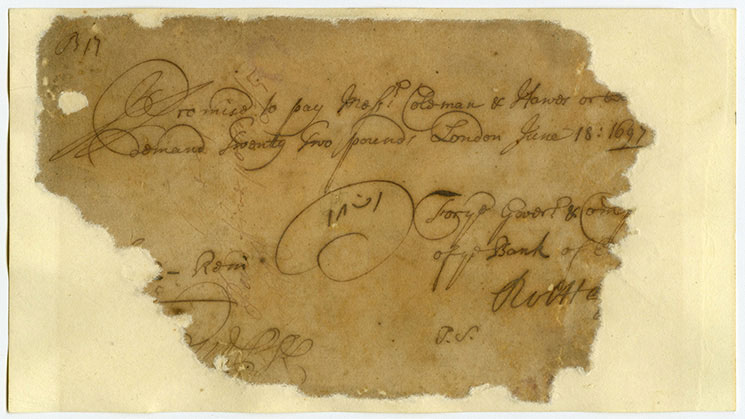
Source: Bank of England website
https://www.bankofengland.co.uk/museum/online-collections/blog/our-earliest-bank-of-england-note
The 19th century brought significant changes with fully printed notes and the introduction of standardized designs to prevent forgery. A pivotal moment in the history of UK banknotes came in 1960 when Queen Elizabeth II became the first monarch to be featured on the Bank of England notes. Her portrait on the £1 note marked the beginning of a tradition of depicting reigning monarchs on the nation’s currency, providing a sense of continuity and national identity.
Security Features: From Simplicity to Sophistication
As technology advanced, so did the sophistication of banknote security features. Early notes relied heavily on the quality of the paper and intricate designs to deter counterfeiters. However, as counterfeiting techniques improved, so too did the security measures.
Modern UK banknotes are a marvel of technology and design. Click on the dots below to explore the key security features:
Introducing the King Charles III Banknotes
In a historic move, the Bank of England is set to release the new King Charles III banknotes on June 5th, 2024. This marks the first time in over 70 years that a new monarch’s portrait will grace the currency, following the reign of Queen Elizabeth II.
The King Charles III banknotes will continue to feature the same high-security features of their predecessors and the new banknotes will initially be available in £5, £10, £20, and £50 denominations. They will circulate alongside the existing Queen Elizabeth II notes, gradually phasing out the older series as they wear out.
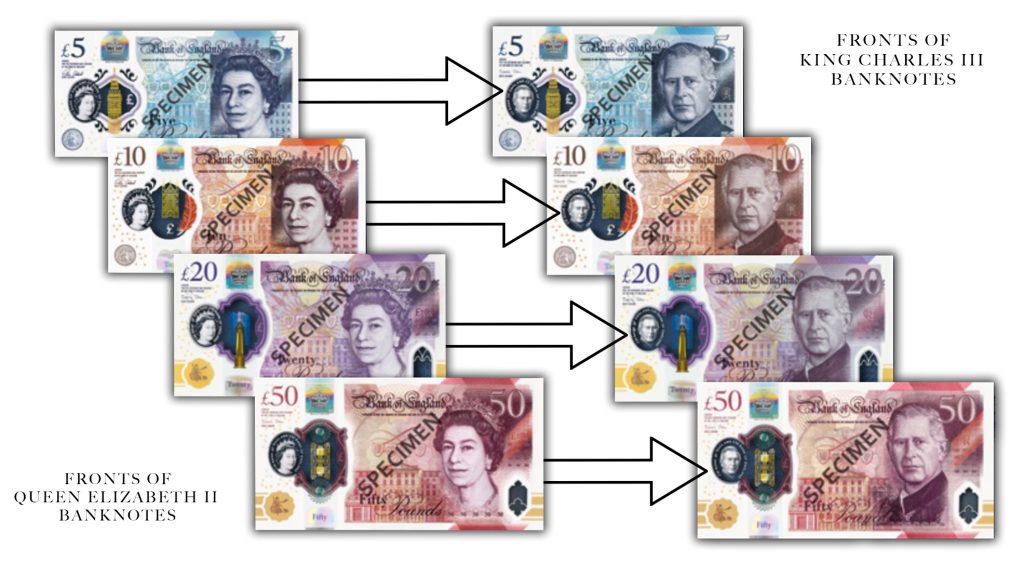
Introducing the DateStamp™ Set: Connecting the Past and Present
To commemorate this historic transition, we are excited to introduce an exclusive DateStamp™ set that brings together the past and the present of UK currency. This unique collection features the Queen Elizabeth II £5 and £10 banknotes alongside the brand new King Charles III £5 and £10 banknotes, each postmarked on the official issue date, 5th June, 2024.
You can now be one of just 2,024 collectors to own this special set.
Click here now to pre-order yours before the official release >>
One Year On: Five Facts About King Charles III’s Coronation Procession
One year has passed since the grandeur of King Charles III’s Coronation Procession swept through the streets of London, a momentous occasion that united the nation in celebration.
And as we reflect on King Charles III’s first year as King, let’s journey back to the splendour and spectacle of that unforgettable day.
Here are five facts about the impressive Coronation Procession:
It was the largest Ceremonial Military Operation in 70 years
The largest operation of its kind since Queen Elizabeth II’s Coronation Procession in 1953, two meticulously planned Processions accompanied King Charles III and Queen Camilla on the 1.42-mile route to and from Westminster Abbey.
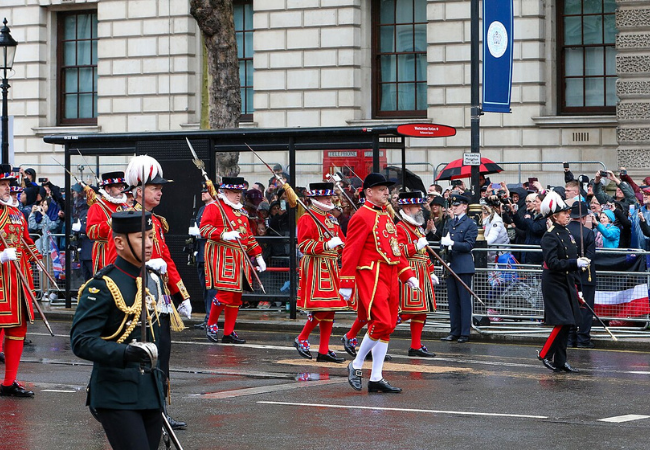
Image Credit: Katie Chan, CC BY-SA 4.0 via Wikimedia Commons
Over 4,000 Servicemen and Women Took Part
Over 4,000 Armed Forces Personnel from at least 35 Commonwealth nations marched alongside Their Majesties during the Procession, this included representatives from The British Army, The Royal Air Force, The Royal Navy, The Royal Marines, The Household Division and The Royal Canadian Mounted Police.

Image Credit: Katie Chan, CC BY-SA 4.0 via Wikimedia Commons
A Coronation First Took Place at Buckingham Palace
For the first time, the Procession formed up in the gardens of Buckingham Palace to give a Royal Salute and three cheers to the new King and Queen. King Charles III and Queen Camilla stepped out onto the West Terrace of the Palace to receive the salute.
The Coronation Flypast Had To Be Altered Again
The famous Buckingham Palace Balcony Appearance was due to be accompanied by a spectacular six-minute flypast including more than 60 aircraft, but the plans were scaled back due to the poor weather forecast. This also happened in 1953 as Queen Elizabeth II’s Coronation Flypast also had to be altered on the day due to poor weather conditions.
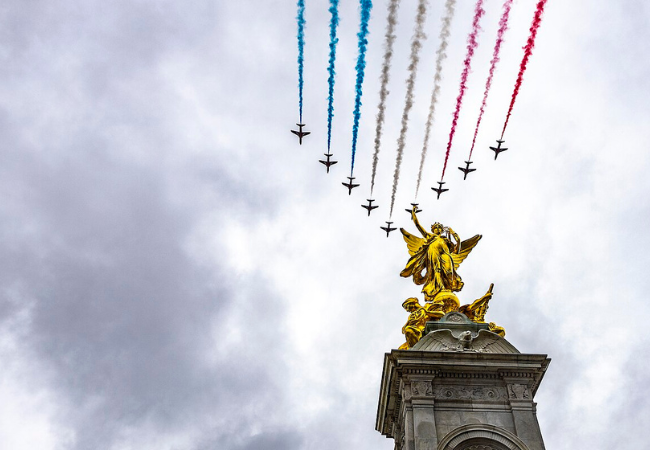
Image Credit: Ministry of Defence, OGL 3 via Wikimedia Commons
The Gold State Coach isn’t as comfortable as it may look
Their Royal Majesties travelled to the Abbey in Queen Elizabeth II’s Diamond Jubilee State Coach and once crowned, returned to Buckingham Palace in the ornate Gold State Coach.
Queen Elizabeth II, who used the coach for her Coronation, said that the Coach might look luxurious but it was an uncomfortable ride due to the lack of suspension!
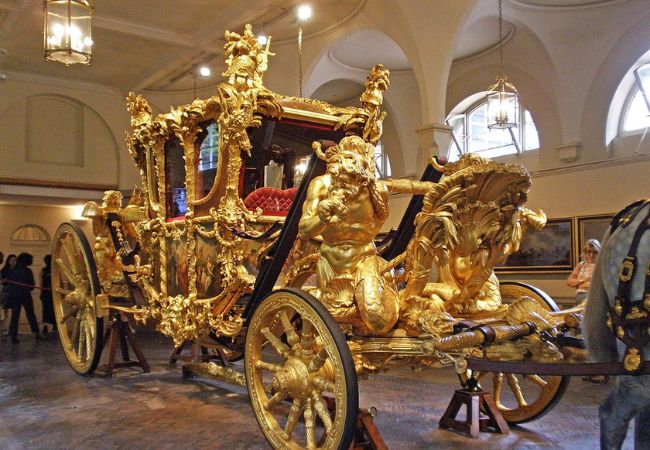
Image Credit: Amanda Slater, CC BY-SA 2.0 via Wikimedia Commons
Other members of The Royal Family followed in the Australian State Coach, the Irish State Coach and the Scottish State Coach. Princess Anne rode behind the Golden State Coach on horseback as with His Majesty’s Guards.
The Ultimate Tribute To King Charles III’s Coronation Procession
Today you can own the ultimate tribute to our nation’s FIRST Coronation in OVER 70 years – The King Charles III Coronation Silver 50p Coin Bar for JUST £9.99 (+p&p) when you trial the King’s Coronation Procession Collection.
This is an extra special specification. Each coin in the collection has been carefully struck from 99.9% Pure Silver to a pristine Proof finish and despite being struck to a rectangular shape – it still carries a fifty pence denomination!
Continue collecting and you’ll build an enviable collection of stunning Silver 50ps featuring scenes taken straight from the Coronation Day!
And what’s more, each coin has been fully approved by His Majesty King Charles III himself!
Click here to secure yours for our introductory price of JUST £9.99 (+p&p) >>
The National Gallery: A Journey Through Art and Time
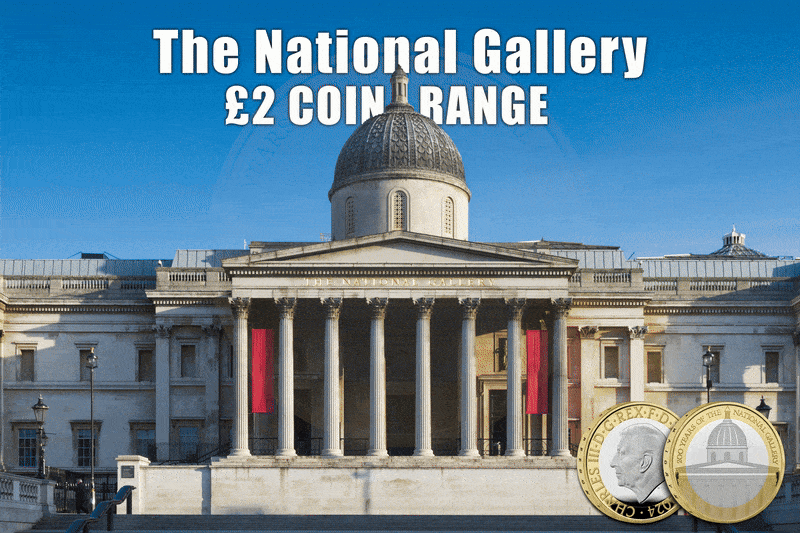
In the bustling heart of London, the National Gallery began its life in 1824, initially occupying the former townhouse of banker John Julius Angerstein at No.100 Pall Mall. The modest beginning—with just 38 paintings—was the spark for what would grow into one of the world’s most revered art institutions. In April 1824 the House of Commons agreed to pay £57,000 for the picture collection of the banker John Julius Angerstein. His 38 pictures were intended to form the core of a new national collection, for the enjoyment and education of all.
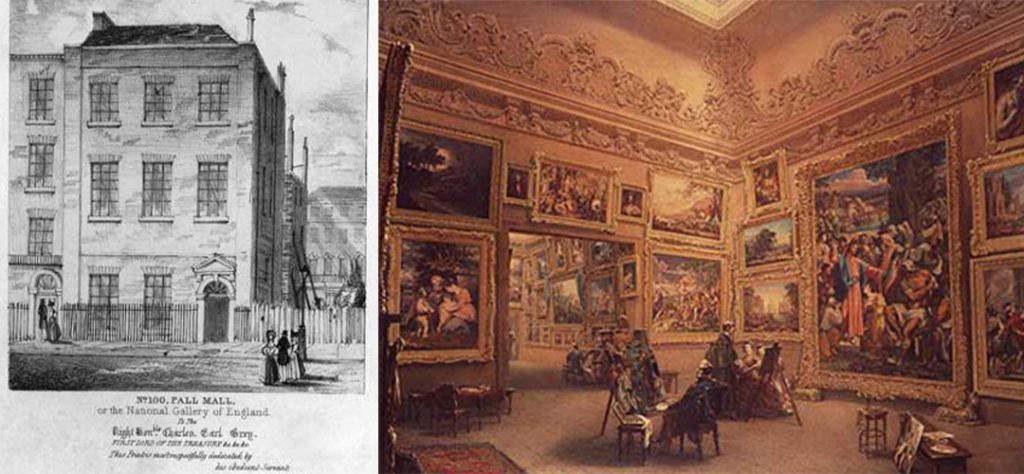
The Evolution of a Landmark
The National Gallery’s early days at No.100 Pall Mall weren’t exactly glamorous. It was small, stuffy, and constantly packed, making it a bit of an embarrassment compared to the grandeur of the Louvre in Paris. However, Agar Ellis, a trustee of the gallery, saw its location on Pall Mall as crucial, right in the heart of London’s hustle and bustle.
In 1832, construction started on a new building by William Wilkins, replacing the old Royal Mews in Charing Cross. Positioned between the affluent West End and less privileged areas to the east, its location was strategic. The idea was to make the collection accessible to people from all walks of life, prioritising social inclusion over concerns like city pollution or architectural flaws.
Even as the possibility of moving to South Kensington arose in the 1850s, the emphasis remained on making art available to everyone. As stated by the Parliamentary Commission of 1857, the purpose of the collection wasn’t just to display pictures, but to enrich the lives of the people, regardless of their social standing.
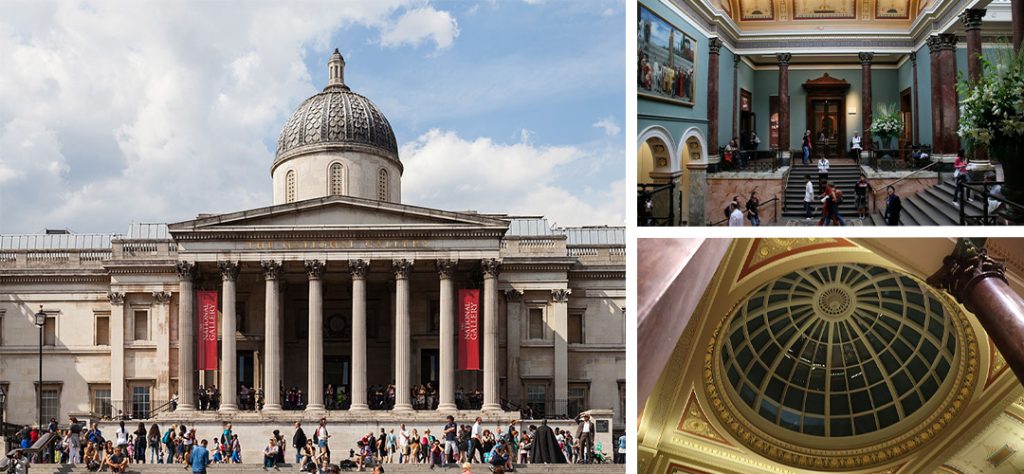
Today, the National Gallery is a vibrant hub for art lovers of all backgrounds. It’s diverse collection, ranging from iconic masterpieces to hidden gems, offers endless opportunities for exploration and inspiration. Through exhibitions, educational programs, and digital initiatives, the gallery provides a welcoming environment where everyone can engage with art.
Celebrating 200 Years of Art
In recognition of its 200th anniversary, the National Gallery is celebrated with a special coin designed by Edwina Ellis, known for her detailed engravings. The coin beautifully features the gallery at its center, surrounded by the inscription of the anniversary. This keepsake is not just a piece of metal but a symbol of the gallery’s enduring legacy, available in gold, silver, and uncirculated editions.
The edge of the coin bears the inscription ‘MAIORVM GLORIA POSTERIS LVMEN EST’, meaning “The glory of our ancestors is a light to our descendants.” This phrase, inscribed in the gallery’s very architecture, encapsulates the essence of the National Gallery: a portal to the past and a beacon for the future.
Explore the whole National Gallery £2 range now by clicking here >>

